Being a responsible car owner involves proactive maintenance, and understanding the key mechanical parts of your car is crucial for making informed decisions about repairs and upkeep. It might seem daunting to learn about all the components, but knowing your vehicle’s anatomy empowers you to keep it running smoothly and understand associated costs.
This guide from CARDIAGXPERT, your auto repair experts, will explore the inner workings of a car, from the engine’s pistons to the essential spark plugs. We’ll break down the key components that make up the anatomy of any vehicle, helping you become more knowledgeable about your car and its maintenance needs.
Engine Components: The Heart of Your Vehicle
The engine is undeniably the heart of your car, converting fuel into the power that drives you forward. Understanding its main components is essential for any car owner.
Cylinder Block and Pistons: The Powerhouse
The cylinder block is the foundational structure of your engine. This robust component houses the cylinders, which are hollow tubes where combustion happens. Inside these cylinders are pistons, held in place by piston rings. Pistons move up and down within the cylinders, playing a vital role in transforming the energy from fuel combustion into mechanical force. This piston and cylinder interaction is the primary source of power generation in your car’s engine.
Crankshaft and Camshaft: Orchestrating Motion
Working in harmony within the engine are the crankshaft and camshaft. The crankshaft is a rotating axle that converts the linear, up-and-down motion of the pistons into rotational motion, which ultimately powers the wheels. Simultaneously, the camshaft precisely controls the timing of the engine valves opening and closing, ensuring proper combustion and exhaust cycles. These two components work in synchronization to create the smooth, propulsive motion of your vehicle.
Intake and Exhaust Manifolds: The Breathing System
Think of the intake and exhaust manifolds as the lungs of your car. The intake manifold is responsible for drawing fresh air into the engine cylinders for the combustion process. Conversely, the exhaust manifold collects and expels the burnt gases produced after combustion, directing them out through the exhaust system. Together, these manifolds optimize the engine’s breathing, which is crucial for efficient performance and power delivery in internal combustion engines. It’s important to note that electric vehicles do not have intake and exhaust manifolds as they operate without combustion.
Powertrain and Gearboxes: Transferring the Power
The powertrain is the system that takes the power generated by the engine and delivers it to the wheels, enabling your car to move. Gearboxes, also known as transmissions, are a critical part of this system.
Different Types of Gearboxes (Transmissions)
Gearboxes, or transmissions, are essential for managing the engine’s power and speed to suit various driving conditions. There are several types, each with its own characteristics:
Manual Gearboxes: Driver Control
Manual gearboxes offer the driver complete control over gear selection. They require the driver to manually engage and disengage gears using a clutch pedal and gear stick. This type of transmission allows for a more direct and involved driving experience, enabling drivers to adapt to various conditions like slippery roads, acceleration needs, and deceleration. Manual transmissions are often favored by driving enthusiasts for the greater sense of control they provide.
Automatic Gearboxes: Ease of Driving
Automatic gearboxes prioritize convenience by automatically shifting gears without driver intervention. This seamless gear changing is achieved without the need for a clutch pedal or manual gear stick operation. Inside an automatic gearbox is a torque converter, a fluid coupling mechanism that facilitates smooth gear transitions. Automatic transmissions are popular for their ease of use, especially in city driving and stop-and-go traffic.
Continuously Variable Transmissions (CVTs): Seamless Acceleration
Continuously Variable Transmissions (CVTs) represent a more advanced type of gearbox technology. CVTs utilize a system of pulleys and belts to provide an infinite range of gear ratios. This design results in exceptionally smooth and continuous acceleration, without the stepped gear changes felt in traditional automatic or manual transmissions. CVTs are known for optimizing fuel efficiency and dynamically adapting to changing driving conditions, making them a sophisticated and increasingly common choice.
Differential and Driveshaft: Distributing Power to the Wheels
The differential and driveshaft are key components in transferring power from the transmission to the wheels. The driveshaft is a rotating shaft that carries power from the transmission output to the wheels. The differential is a clever mechanism that allows the wheels to rotate at different speeds, which is crucial when turning corners. Without the differential, the outer wheels would have to travel the same distance as the inner wheels in a turn, causing instability and tire wear. The differential ensures power is distributed appropriately to each wheel, enabling smooth and controlled turns.
Clutch and Torque Converter: Engaging the Transmission
The clutch and torque converter are essential for engaging and disengaging the power flow from the engine to the transmission. In manual transmissions, the clutch is a driver-operated mechanism that allows for temporary disconnection of the engine from the gearbox, enabling gear changes. In automatic transmissions, the torque converter smoothly transfers engine power to the transmission using fluid coupling, eliminating the need for a clutch pedal and providing seamless gear shifts. Both components play crucial roles in enabling smooth and dynamic driving experiences, each suited to their respective transmission types.
Fuel and Ignition Systems: Starting the Combustion
The fuel and ignition systems work together to deliver fuel to the engine and ignite it, creating the combustion that powers your car.
Fuel Injection System: Precise Fuel Delivery
The fuel injection system is a critical component in modern engines, ensuring optimal combustion and fuel efficiency. Fuel injectors are precision nozzles that spray a fine mist of fuel directly into the engine cylinders. This precise fuel delivery method offers significant improvements over older carburettor systems, which were prone to clogging and less efficient fuel distribution. Fuel injection results in better engine performance, reduced emissions, and improved fuel economy.
Spark Plugs and Ignition Coils: Lighting the Fire
The ignition system is composed of spark plugs and ignition coils, working in tandem to initiate combustion. Spark plugs are positioned in each cylinder and generate an electric spark that ignites the air-fuel mixture. Ignition coils are responsible for amplifying the voltage from the car’s electrical system to create the high-voltage spark needed at the spark plug gap. The synchronized operation of spark plugs and ignition coils is vital for efficient and rapid ignition, which is essential for optimal engine performance, responsiveness, and fuel efficiency.
Throttle Body and Air Intake System: Controlling Airflow
The throttle body and air intake system collaborate to regulate the amount of air entering the engine. The throttle body contains a valve that the driver controls with the accelerator pedal, determining how much air flows into the engine. The air intake system includes air filters and ducting that ensure a clean and efficient supply of air to the throttle body. Together, these components manage the engine’s “breathing,” which is crucial for achieving peak power output, fuel efficiency, and overall engine performance.
Cooling and Lubrication: Maintaining Optimal Temperature
Engines generate a lot of heat, and the cooling and lubrication systems are essential to prevent overheating and ensure smooth operation.
Radiator and Cooling Fans: Heat Dissipation
The radiator and cooling fans are primary components in preventing engine overheating. The radiator is a heat exchanger that dissipates heat from the engine coolant as it circulates through its core. Cooling fans enhance airflow through the radiator, especially when the car is stationary or moving slowly, further expelling excess heat. This system maintains the engine at an optimal operating temperature, preventing damage from overheating and promoting efficient performance.
Water Pump and Hoses: Coolant Circulation
The water pump and hoses are additional crucial elements of the engine cooling system. The water pump is responsible for circulating the coolant throughout the engine and cooling system. Hoses provide the pathways for the coolant to travel, connecting the water pump, radiator, engine block, and other cooling components. This continuous circulation of coolant ensures heat is effectively removed from the engine and dissipated by the radiator.
EV Battery Cooler System: Thermal Management for Electric Vehicles
Electric vehicles (EVs) utilize a different type of cooling system specifically designed for the battery and electric motor. The battery cooler, similar in function to a traditional radiator, dissipates heat from the battery coolant. EV cooling systems are vital for maintaining the optimal temperature of the battery pack and electric motor, which is crucial for battery longevity, performance, and overall vehicle efficiency.
Oil Pump and Oil Filter: Lubrication and Cleaning
The oil pump and oil filter are essential parts of the engine lubrication system. The oil pump circulates engine oil throughout the engine, ensuring that moving parts are constantly lubricated to reduce friction and wear. The oil filter removes impurities and contaminants from the oil, keeping it clean and effective. Together, the oil pump and oil filter contribute significantly to extending engine life and maintaining optimal engine health.
Electrical System: Powering the Car’s Functions
The electrical system powers everything from starting the engine to running the lights and accessories.
Battery: Initial Power Source
The car battery is the primary source of electrical energy for the vehicle. It provides the initial power to start the engine and supplies power to various electrical components when the engine is not running. All cars, including EVs, rely on batteries, though EVs have significantly larger battery packs for propulsion. A functioning battery is crucial for starting the car and ensuring the electrical system operates correctly.
Alternator: Recharging and Power Supply
The alternator is an electrical generator driven by the engine. It converts mechanical energy from the engine’s rotation into electrical energy. The alternator’s main functions are to recharge the battery while the engine is running and to supply power to the car’s electrical system, including lights, radio, and other accessories. Importantly, the alternator also regulates the voltage in the electrical system, ensuring a consistent power supply and preventing battery overcharging.
Starter Motor and Solenoid: Initiating Engine Start
The starter motor and solenoid work together to crank the engine and initiate the combustion process. The solenoid is an electromagnetic switch that activates the starter motor when the ignition key is turned. The starter motor is a powerful electric motor that engages with the engine’s flywheel to turn the crankshaft and start the engine. This coordinated action transforms electrical energy from the battery into the mechanical motion needed to start the engine.
Wiring Harness and Fuses: Electrical Network
The wiring harness is a network of wires that distributes electricity throughout the vehicle, connecting all the electrical components. Fuses are safety devices strategically placed in the wiring harness to protect against electrical overloads and short circuits. Fuses are designed to break the circuit if excessive current flows through them, preventing damage to components and reducing the risk of electrical fires. Together, the wiring harness and fuses ensure a safe and organized distribution of electrical power throughout the car.
Suspension and Steering: Ride Comfort and Control
The suspension and steering systems are responsible for ride comfort, handling, and directional control.
Shock Absorbers and Struts: Smoothing the Ride
Shock absorbers and struts are vital components of the suspension system. Shock absorbers are designed to dampen vibrations and control suspension movement, providing a smoother ride by absorbing bumps and road irregularities. Struts, often found in the front suspension and sometimes the rear, combine the functions of shock absorption and structural support, contributing to vehicle stability and handling. Together, they enhance driving comfort and maintain tire contact with the road.
Control Arms and Bushings: Stability and Handling
Control arms and bushings are chassis components that contribute to stability and smooth handling. Control arms are hinged suspension links that connect the wheel hubs to the vehicle’s frame. Bushings are flexible rubber or polyurethane mounts that attach control arms to the frame, allowing for controlled movement and vibration absorption. This combination helps to absorb road imperfections, maintain proper wheel alignment, and ensure a balanced and comfortable ride.
Power Steering Pump and Rack: Effortless Steering
The power steering pump and steering rack are essential for responsive and easy steering. The power steering pump, driven by the engine, generates hydraulic pressure. The steering rack uses this hydraulic pressure to assist steering, making it easier for the driver to turn the wheels. This power steering system provides precise and smooth maneuverability, reducing driver effort and enhancing control, especially at low speeds and during parking.
Braking System: Ensuring Safety
The braking system is arguably the most critical safety system in your car, responsible for slowing down and stopping the vehicle.
Brake Pads: Creating Friction for Stopping
Brake pads are friction materials that are pressed against the brake rotors to slow the wheels. Typically made of composite materials, brake pads convert kinetic energy into heat through friction. Their robust design ensures reliable braking performance when the brake pedal is applied. Brake pads are wear items and will need replacement over time, depending on driving habits and conditions.
Brake Calipers: Applying Pressure to Brake Pads
Brake calipers are located around the brake rotors and house pistons that apply pressure to the brake pads. When hydraulic pressure from the brake system is applied, the pistons in the caliper clamp the brake pads against the rotor. This clamping action generates the friction needed for controlled deceleration. Brake calipers are precision components that ensure responsive and reliable braking performance, contributing directly to driving safety.
Exhaust System: Managing Emissions and Noise
The exhaust system is responsible for safely channeling exhaust gases away from the engine, reducing harmful emissions, and minimizing noise.
Catalytic Converter: Reducing Harmful Emissions
The catalytic converter is a crucial emission control device in modern cars. It uses chemical catalysis to convert harmful pollutants in the exhaust gases, such as carbon monoxide, hydrocarbons, and nitrogen oxides, into less harmful substances like carbon dioxide, water, and nitrogen. This process significantly reduces vehicle emissions, contributing to cleaner air and environmental protection.
Muffler and Resonator: Noise Reduction
The muffler and resonator work together to control and reduce exhaust noise. The muffler is the primary noise reduction component, using chambers and baffles to dampen sound waves. The resonator fine-tunes exhaust sound frequencies, further reducing noise and potentially influencing the exhaust note. These components ensure the car operates within acceptable noise levels and contributes to a more pleasant driving experience.
Oxygen Sensors: Monitoring Exhaust Gases
Oxygen sensors are located in the exhaust system and monitor the oxygen levels in the exhaust gases. This data is sent to the engine control unit (ECU), which uses it to fine-tune the air-fuel mixture for optimal combustion efficiency and reduced emissions. Oxygen sensors play a critical role in ensuring the engine runs cleanly and efficiently.
Interior Components: Comfort and Convenience
Interior components enhance driver and passenger comfort, convenience, and safety inside the car.
Seats & Seat Belts: Occupant Safety and Comfort
Seats are designed to provide comfort and support for occupants, available in various materials and configurations. Seat belts are essential safety devices that secure occupants in their seats during travel. Modern seat belts often include features like pretensioners, which tighten the belt in a collision, and force limiters, which reduce the force of the belt on the occupant’s chest.
Dashboard & Steering Functions: Driver Information and Control
The dashboard is the central information display for the driver, providing essential data such as speed, fuel level, engine temperature, and warning lights. The steering wheel integrates various controls beyond steering, including power-assisted steering, turn signal controls, windshield wiper controls, and often multimedia system controls, putting essential functions within easy reach of the driver.
Exterior Components: Body and Aesthetics
Exterior components define the car’s appearance, aerodynamics, and provide access and protection.
Features & Controls on Doors: Access and Convenience
Doors provide access to the vehicle’s interior and incorporate various features and controls. Standard features on car doors include electric window controls, door locks (manual or power), and mirror adjustments. Some vehicles offer advanced features like keyless entry systems, power-operated doors, and integrated speakers, enhancing convenience and user experience.
Wheels and Tyres: Road Contact and Performance
Wheels and tires are the car’s connection to the road, affecting handling, braking, and ride quality.
Types of Tyres and Their Functions
| Type of tyre | Function |
|---|---|
| Summer tyres | Designed for warm weather, providing excellent grip and handling in dry and wet conditions. |
| Winter tyres | Engineered for cold temperatures, featuring specialized treads for superior traction on snow and ice. |
| All-season tyres | Versatile tires offering a balance of performance in various conditions, suitable for moderate climates. |
| Performance tyres | Optimized for sporty driving, emphasizing handling, grip, and responsiveness at high speeds. |
| Off-Road tyres | Built for rugged terrains, with aggressive treads and reinforced sidewalls for enhanced traction and durability off-road. |
| Run-flat tyres | Feature reinforced sidewalls allowing continued driving at reduced speeds after a puncture, offering increased safety and convenience. |
| Touring tyres | Focused on providing a smooth and comfortable ride, ideal for long journeys with low noise and good handling characteristics. |
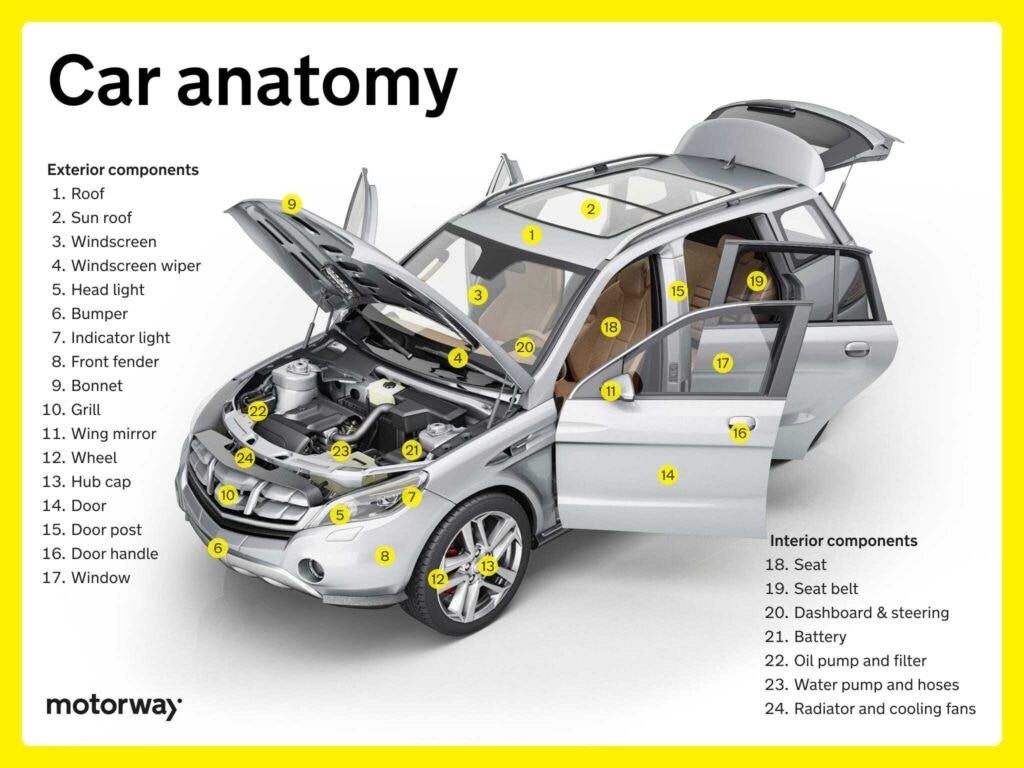
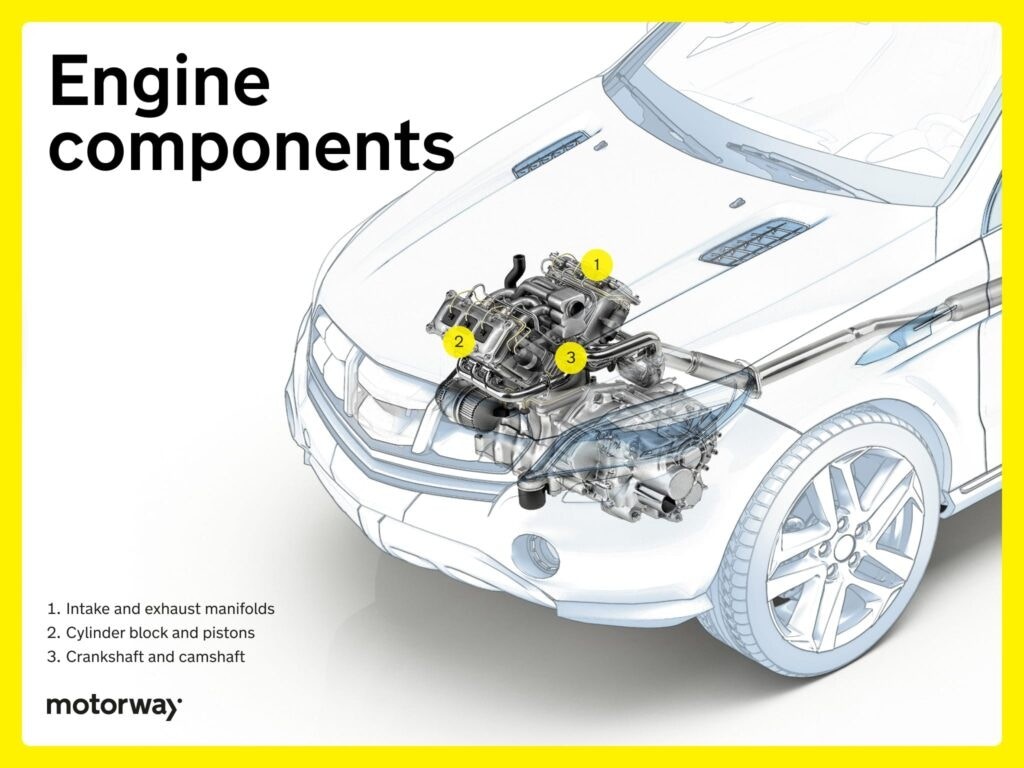
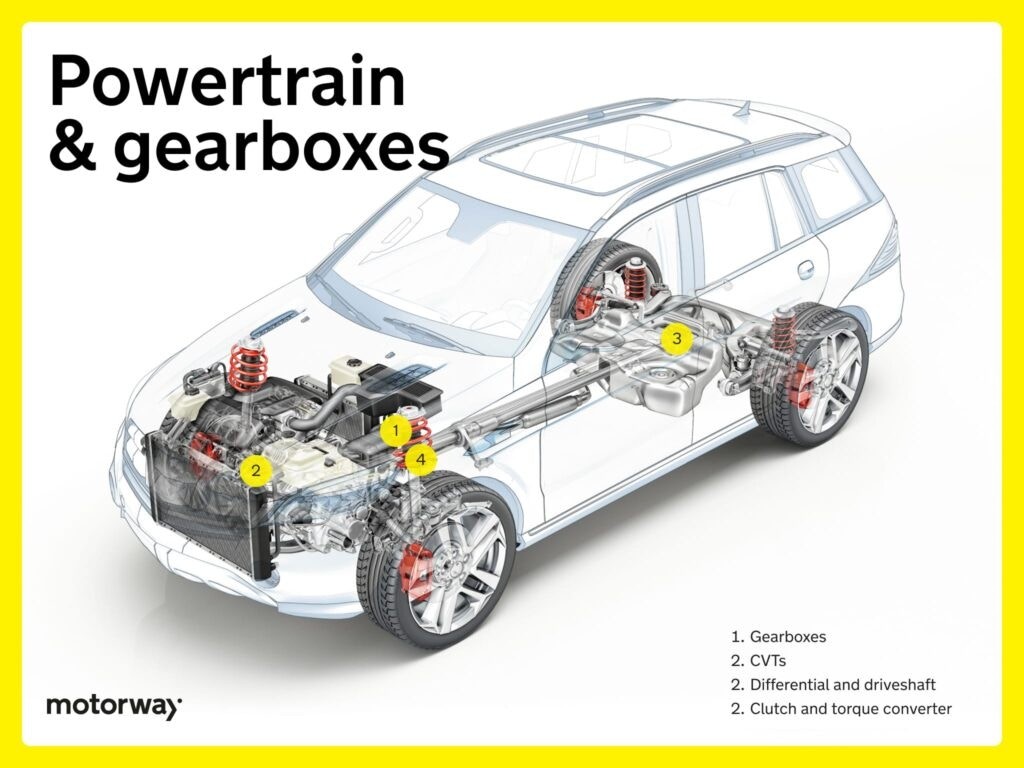
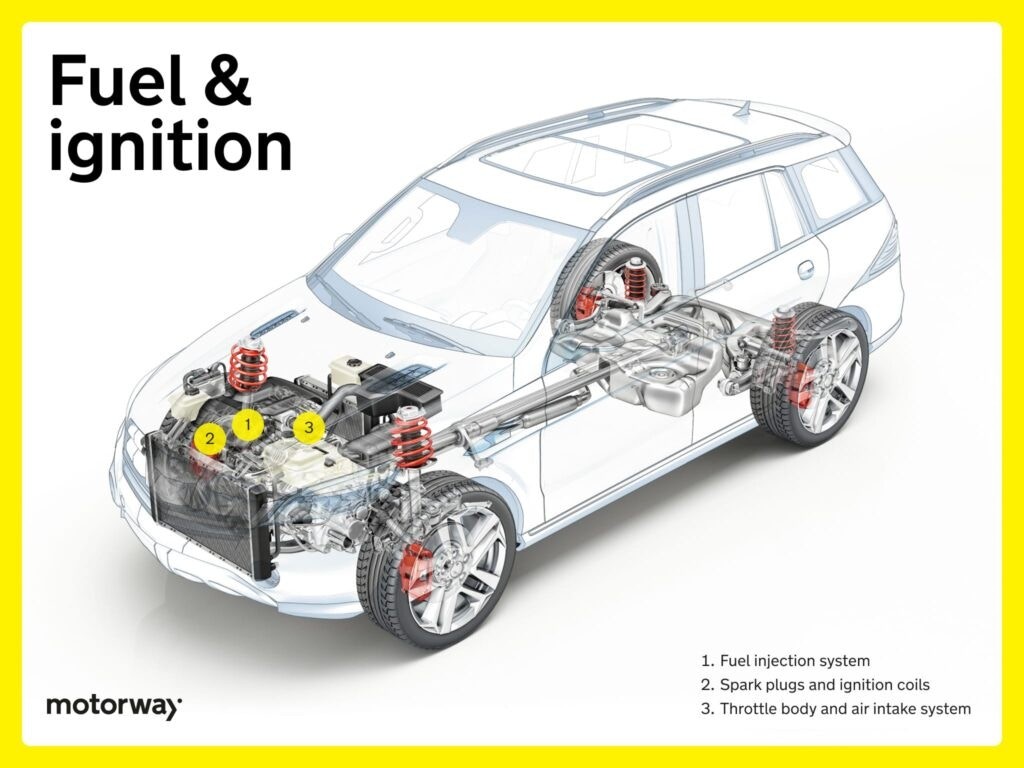
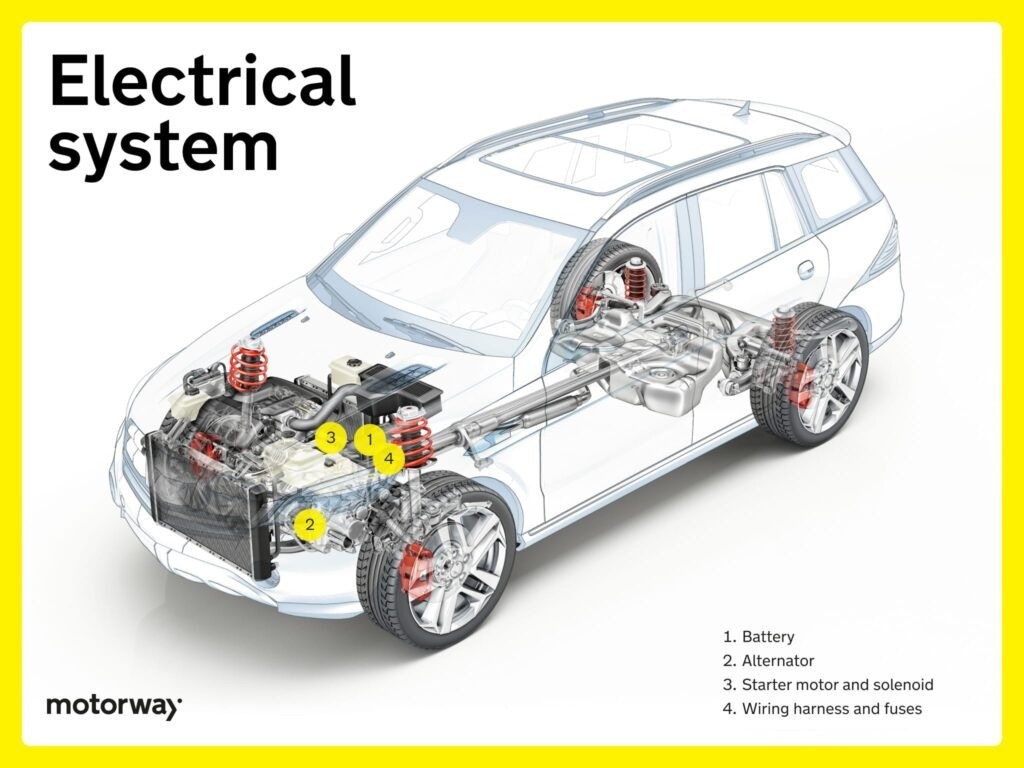
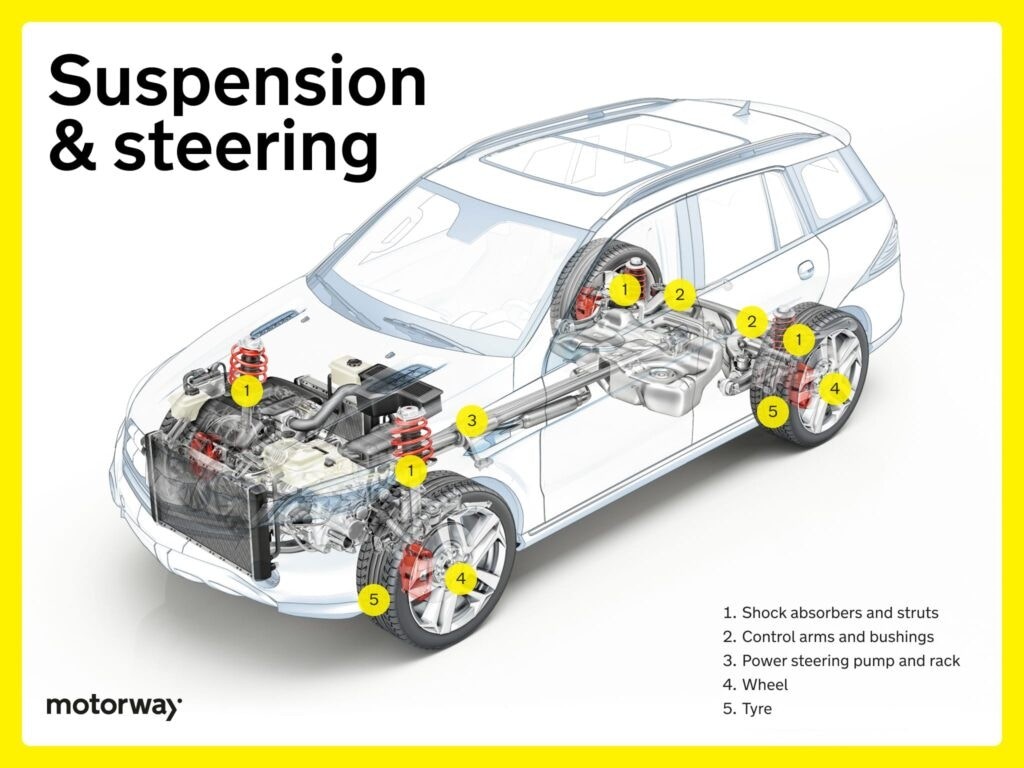
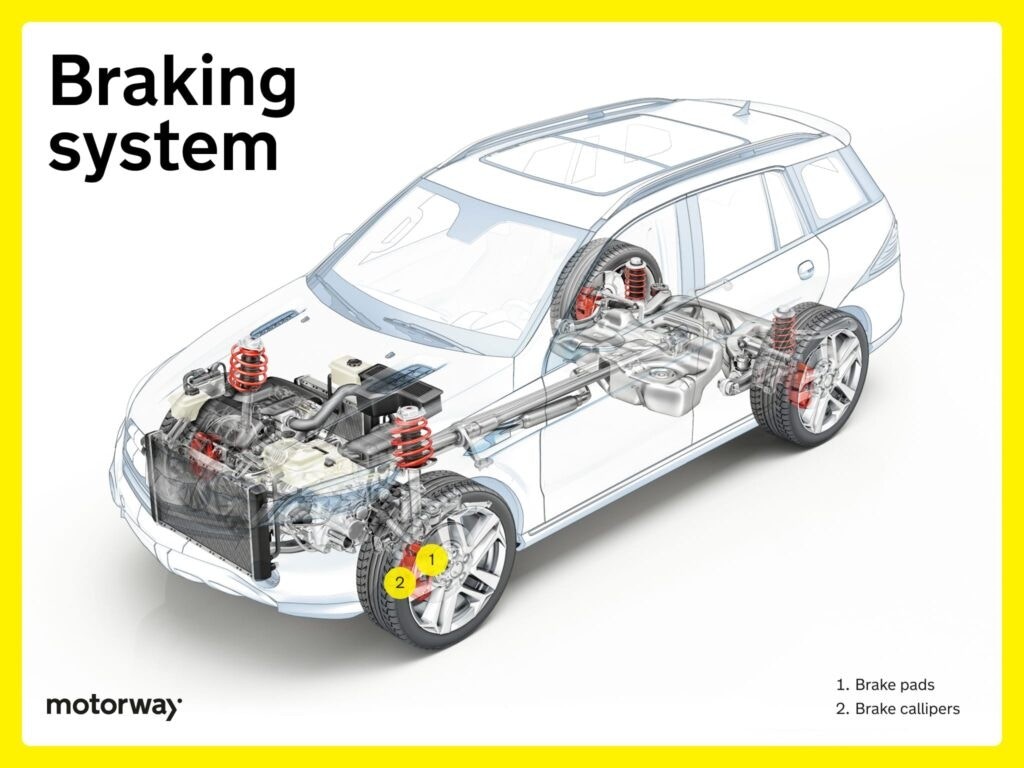
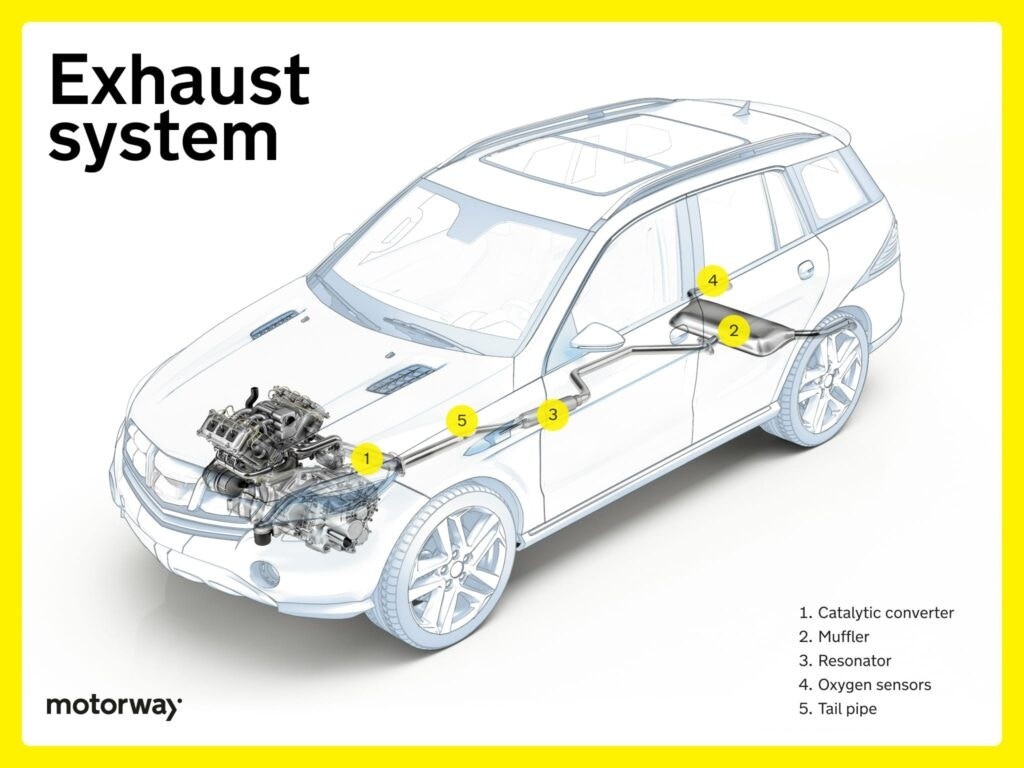
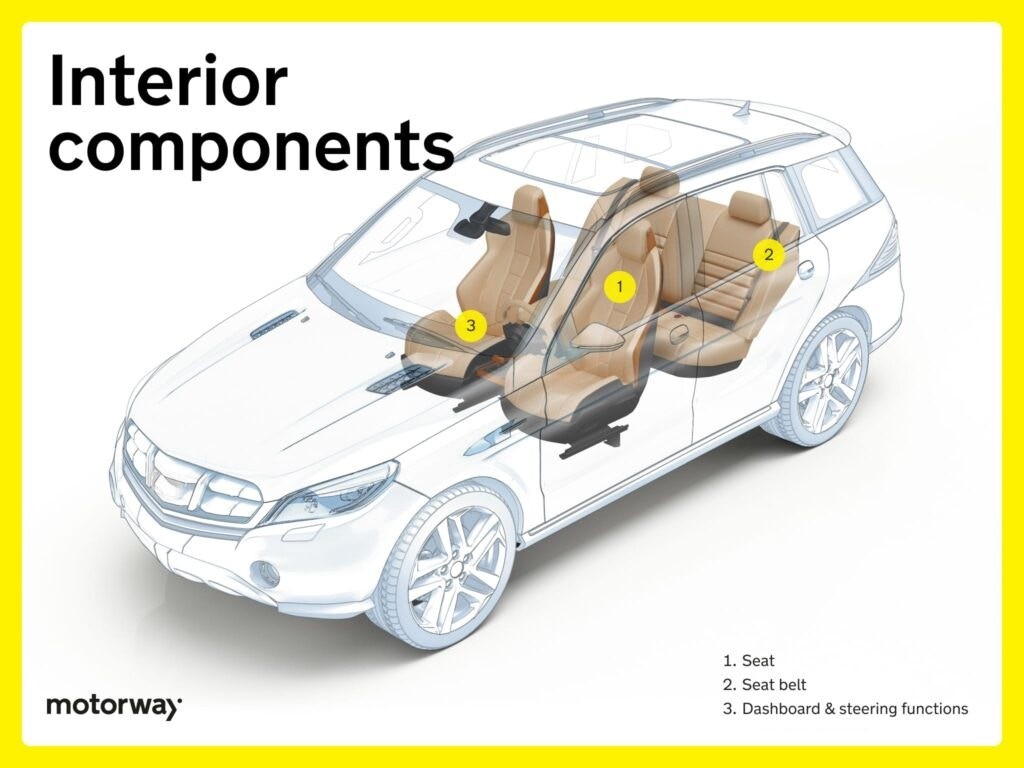
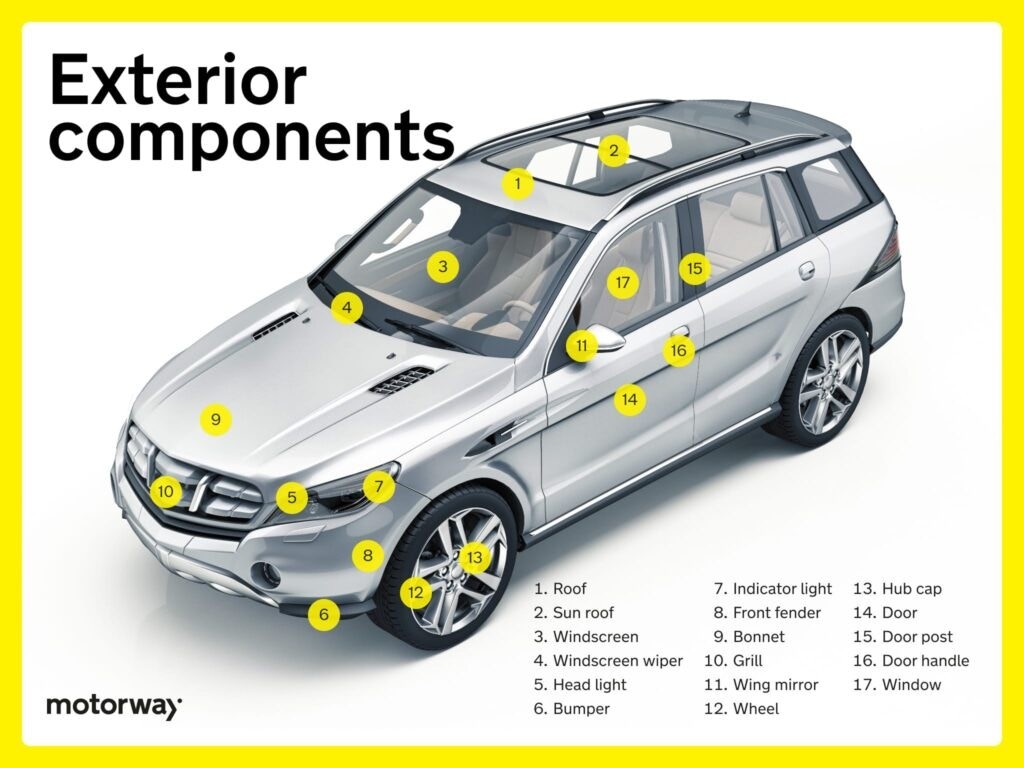
Wheel Construction Guide: Alloy vs. Steel Wheels
Wheel construction affects wheel weight, strength, and aesthetics. Common types include:
- One-piece construction: Wheel made from a single piece of material (alloy or steel), common for both alloy and steel wheels.
- Two-piece construction: Wheel made of two parts (center and rim) joined together, often found in performance or custom wheels.
- Three-piece construction: Wheel made of three parts (center, outer rim, inner hoop) for greater customization, popular in aftermarket wheels.
- Forged construction: Wheel made from compressed metal under high pressure, resulting in stronger and lighter wheels, used in high-performance applications.
- Multi-piece construction: Wheels combining multiple components for sizing and customization versatility.
Wheel materials also vary:
- Alloy wheels: Made from aluminum or magnesium alloys, lightweight for better heat dissipation and enhanced appearance.
- Steel wheels: Made from steel, robust and durable, cost-effective and suitable for rugged conditions, though heavier than alloy wheels.
Tyre Pressure Monitoring System (TPMS): Safety and Efficiency
The Tyre Pressure Monitoring System (TPMS) is a safety feature that continuously monitors tire air pressure using sensors in each tire. TPMS transmits real-time pressure data to the vehicle’s computer and alerts the driver if tire pressure deviates from recommended levels. Maintaining proper tire pressure improves safety, fuel efficiency, and extends tire lifespan.
FAQs About Car Parts
What parts are under a car?
Key components located under a car include the engine, transmission, suspension system, exhaust system, driveshaft, differential, and fuel system. These systems work together to enable the vehicle’s movement and operation.
How many car parts are on a car?
The number of parts in a modern car can exceed 30,000, encompassing all systems and components. Electric vehicles typically have fewer parts due to simpler powertrains relying on batteries instead of complex mechanical engines.
What are the important parts of a vehicle?
Essential vehicle parts include the engine, transmission, braking system, steering system, suspension, electrical system, and tires. Each of these plays a critical role in the vehicle’s safe and reliable operation.
What parts of a car can be sold separately?
Individual car parts like engines, transmissions, body panels, doors, bumpers, lights, and specific electrical components can often be sold separately as replacements, for repairs, or upgrades.
Why is there a shortage of car parts?
Car part shortages can arise from various factors such as supply chain disruptions, increased demand, manufacturing limitations, global events impacting production and logistics, and shortages of raw materials.
Need to Sell Your Car?
Want to learn more about car ownership, maintenance, and selling your vehicle? CARDIAGXPERT offers guides covering various topics from car maintenance to selling tips. Explore our resources to become a more informed car owner.
